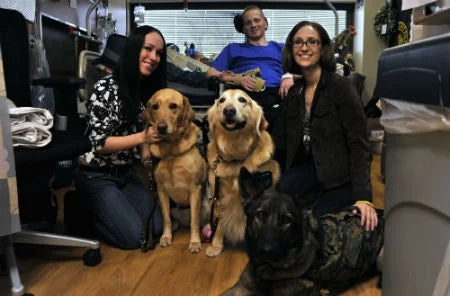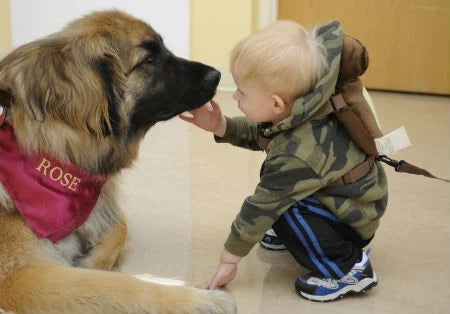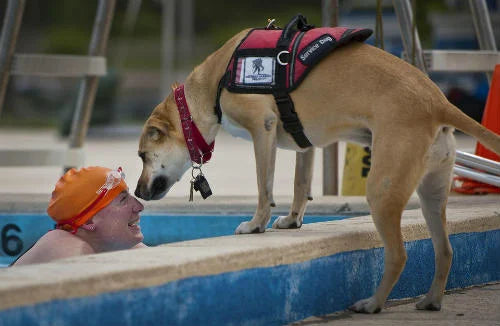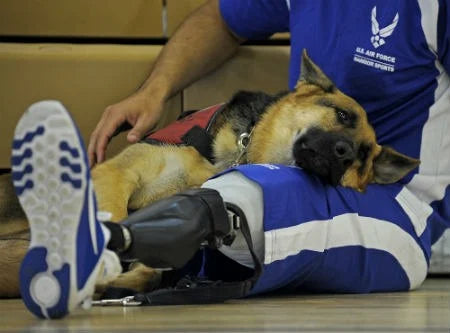
What is it?
That some animals, especially dogs, participate in complementary therapy to improve the health of some people may seem like a far-fetched idea. However, it has been possible to demonstrate the healing effect that the assistance of these pets can provide through therapy. To begin with, Animal Assisted Therapy (AAT) consists of a psychological process in which an animal intervenes to carry out a direct interaction with the patient; on this occasion, reference is made only to dogs.
Who is Dog Therapy for?
Although there is no specific list of people to whom this type of therapy is directed, different studies have proven its usefulness in the following cases:- People with Alzheimer's
- People with HIV
- Autistic children
- Cases of depression or anxiety
- Older adults in a state of loneliness
- Self-esteem problems
Objectives of this therapy
The objectives pursued by this therapy are closely linked to the benefits it achieves. However, we will see the latter in depth later.
- Strengthen self-esteem
- Improve autonomy and independence
- Promote interpersonal relationships (and communication with other people)
- Create a sense of responsibility
- Strengthen social relationships (empathy, interest in others)
- Encourage the performance of specific motor activities independently
- Control anxiety
- Reduce depressive states
Benefits
We have reached one of the most relevant points within this information, and that is to know the contributions that this type of therapy has managed to achieve. Thinking that this therapy only provides psychological benefits is a very common mistake. The scope that this process has had within other fields of human life has been various, which is why it is worth mentioning them separately.Psychological
To cite the benefits of dog therapy in this area, we will look at a brief example: Suppose a patient goes to an appointment with the psychologist because he feels lonely. Within the conversation, the specialist talks to you about this process and invites one of the dogs used in the therapies to enter the office. The animal sits at his feet, the patient begins to pet him, he responds by wagging his tail, and he continues after realizing that he liked it. 20 minutes pass like this and then the dog leaves. When this happens, the patient will realize that he no longer feels as sad as at the beginning, the emptiness faded with the company of this little friend who occupied his attention during those minutes .
- Reduces depression and anxiety
- Encourages physical and social contact
- Fights Attention Deficit and Hyperactivity Disorder (especially in children)
- Practice link building
- It is a motivation and mental stimulation technique
Psychomotor skills
Something as simple as stroking, brushing or going for a walk with the dog causes excellent benefits for the patient such as improving motor skills, strengthening coordination, enhancing motor skills and keeping the main muscles of the human body in shape.
Educational
Learning through games, learning about cooperation and teamwork. Acquiring skills and, above all, essential social skills such as respect, empathy, cordiality, communication and collaboration are some of the most basic.Sensory
Through the work of the senses, the strengthening of hearing, sight and touch will be carried out.Versatility
One of the main benefits of dog therapy is its wide versatility, which makes it adaptable for any situation. It can be done in a group or individually, depending on the characteristics of the patient and the perception of the specialist in each case. There are no limitations to carrying it out other than the person's willingness to improve their state of health and well-being .
To end
Without a doubt, the dog can become more than an adventure companion, it can be a support in the most necessary moment and a strength to maintain our state of health and well-being. Although it may seem insignificant, the presence and help of a dog can make a difference in a moment of sadness and, even more so, bring great benefits to our lives in a simple and very practical way.Other articles of interest:












